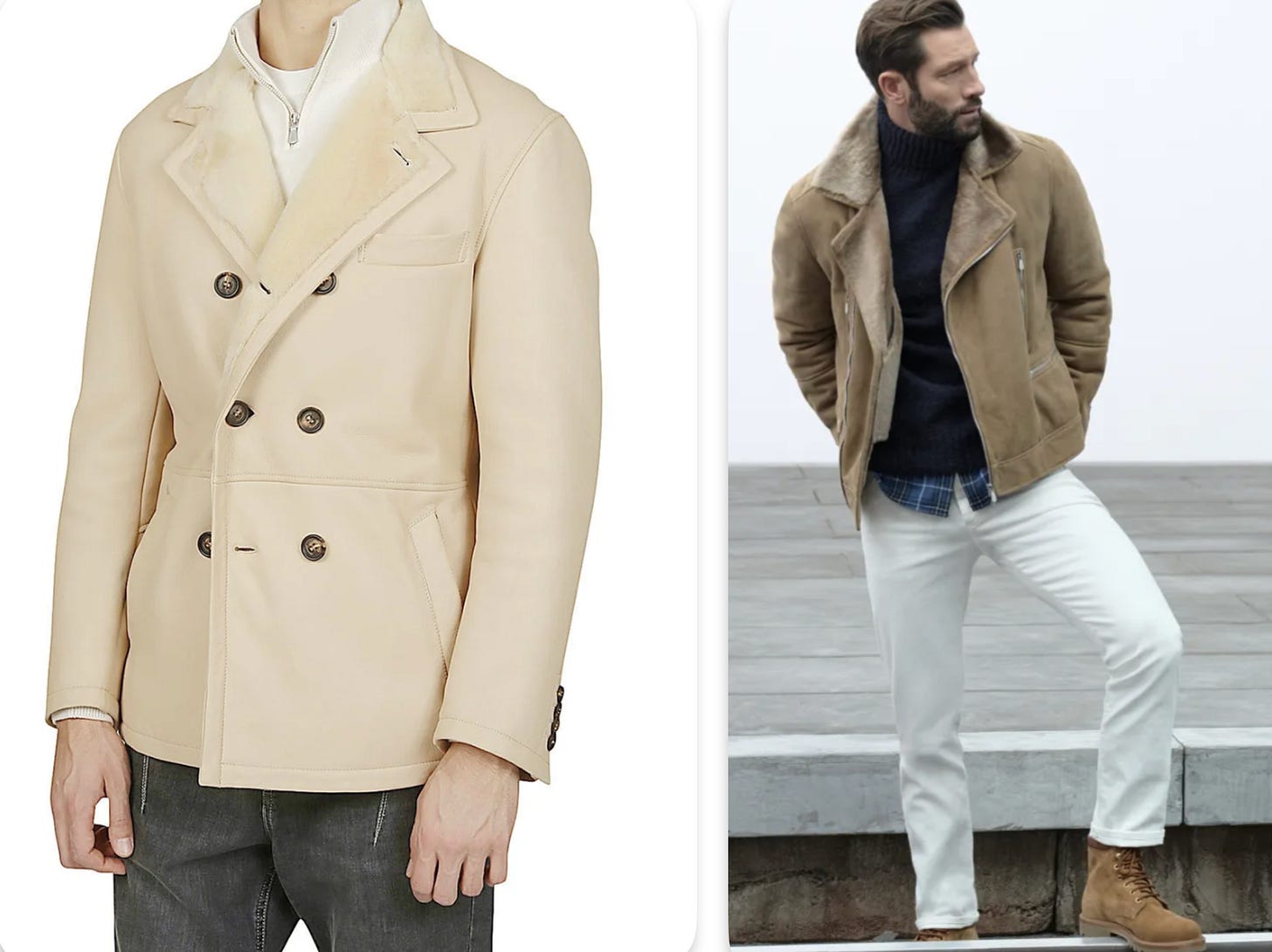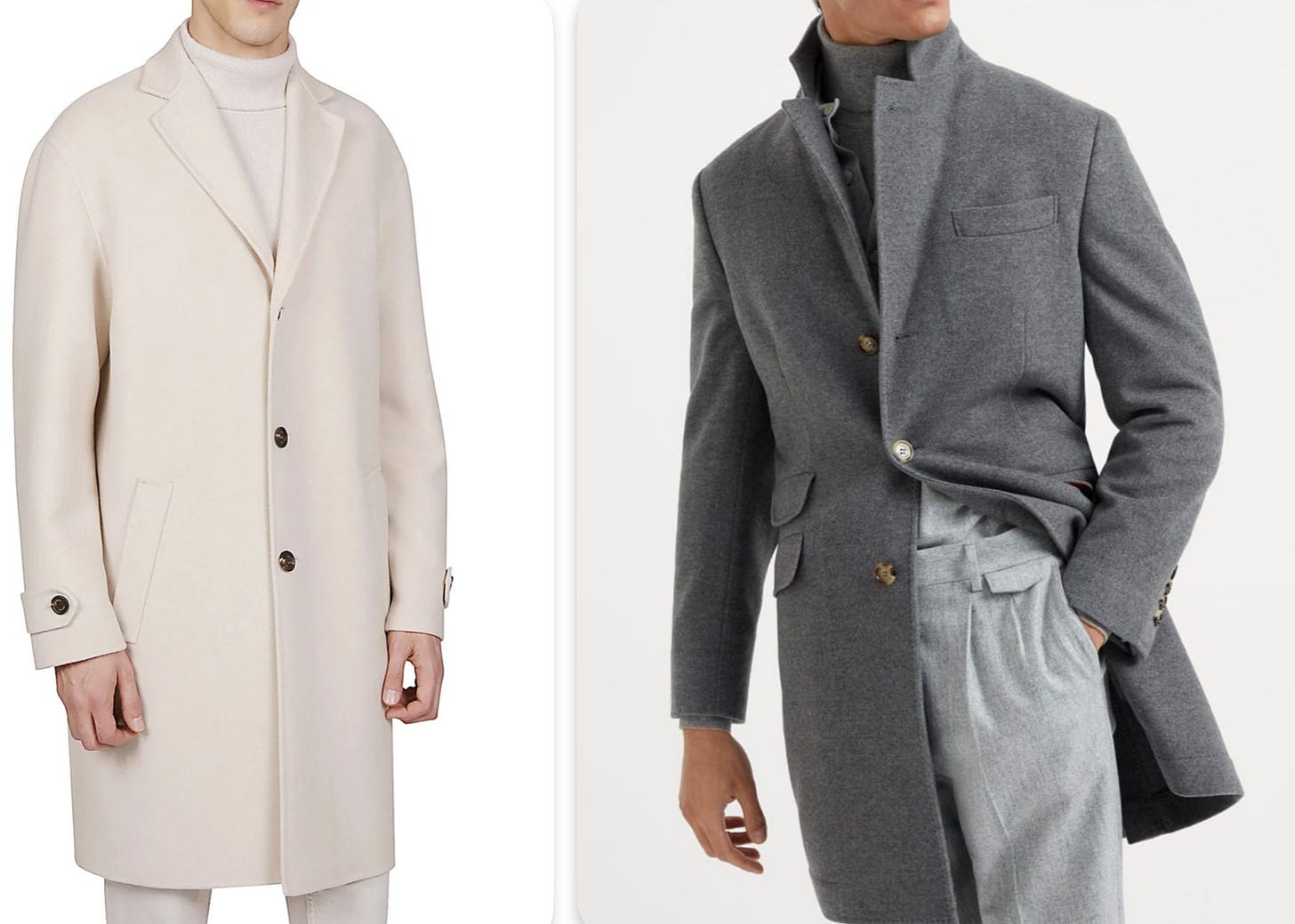Eleventy Milano | The Milanese Cashmere Brand Aiming for a Brunello Cucinelli Alternative—But Feels More Like a Knockoff
Some readers asked me to write about Eleventy, so here is this article. Previously, I had never heard of this brand. If you simply search online, because Eleventy began focusing on marketing in China in 2024, you'll see Eleventy among the Old Money style brands. However, people who can recognize clothing craftsmanship and fit can immediately see the quality level - it's a very clumsy imitation.
My continuing to write about this actually serves as a negative example, showing how an Italian domestically capitalized substitute brand develops. Not only do many Chinese brands want to create Brunello Cucinelli substitutes, even Italian domestic brands want to capture market share through BC substitutes. One is Brunello Cucinelli, the other is The Row . Seeing these two brands develop, fashion circles in China, America, and Italy have become somewhat eager to follow suit, while traditional British and French fashion have already given up.
Before Fabiana Filippi transformed, Eleventy wanted to be a substitute for both BC and Fabiana Filippi, two Umbrian cashmere brands. I've always felt that being a substitute brand essentially means capitalizing on these traffic-generating brands for a few years, but with a limited ceiling.
01
Eleventy was established in Milan in 2007 by Marco Baldassari (men's creative director) and childhood friend Paolo Zuntini (women's creative director). Andrea Scuderi joined in 2009 as a partner and operational executive. The brand initially started with menswear, later expanding to women's wear, children's clothing, and home collections.
Eleventy is headquartered in Italy with multiple outlet stores across European cities. In 2014, Vei Capital acquired 51% of Eleventy Milano's shares to help the brand expand globally and into online markets. In 2016, they established headquarters in New York to enter the US market and actively expanded stores in Japan, Russia, Netherlands, France, and other countries. In 2024, they opened their first store in China.
Unlike our impression of Italian family businesses spanning generations, Eleventy's capitalization operations are obvious and somewhat impetuous. Even Eleventy's operations on Xiaohongshu give me this impression.
Because founder Marco Baldassari worked as a fabric sourcing agent for Italian brands for over 10 years before establishing Eleventy, it seems the brand should value high-quality fabrics. However, even though some cashmere sweaters advertise using Cariaggi cashmere yarn, they still use the lowest-end yarns, not even 100% cashmere, instead blending with ordinary Alpaca wool.
By outsourcing production to more than 100 small Italian workshops to reduce costs, they provide lower-priced, higher value-for-money Italian-made products, focusing on the mass cashmere market. While keeping prices low, they ensure all clothing maintains Made in Italy quality (Italians themselves know the value of Made in Italy), hoping to capture some share in Italy's competitive fashion market.
We are in a unique position in that we are working with a network of almost 100 factories in Italy that provide us products from just about every sector of the industry, whether it is fabrics, buttons, accessories, etc. This greatly helps in controlling costs, which is also what drives the pricing for our competitors. I would venture to say that you will not find the combination of the kind of quality we have with the prices we offer anywhere else.
--Marco Baldassari
However, after capital investment, they seem to have abandoned Made in Italy, only promoting it verbally. Even their official website doesn't mention Made in Italy, and the workmanship is very poor.
02
I looked at Eleventy's clothing, and while the styles are very similar to BC, the cashmere fabric seems to be ordinary 17-micron, but the fit details are really poor. Because they focus on menswear, Eleventy's display windows all feature male models. I'll only introduce men's clothing here, including cashmere sweaters, suits, shoes, and belts - they all look like counterfeit Brunello Cucinelli.
In the images below, all white-background images on the left are Eleventy Milano, and on the right is Brunello Cucinelli. In this comparison, the most obvious differences are in fabric quality, followed by the fit (especially the waist and arm areas), the smoothness of lines, and the naturalness of folds.
For these two cashmere sweaters, the right-side BC clearly chose finer, more uniform cashmere with a lustrous feel. In terms of fit, BC's is more elegant. For the left-side Eleventy sweater, notice the waist and bicep areas - they're uneven with rough lines that aren't smooth at all.
Looking at this pinstriped suit, the waist is also stiff and doesn't conform to the body's lines. The left-side Eleventy suit just looks cheap.
BC's signature shearling coat: The left-side Eleventy's wool looks sparse and dry, while the right-side BC's wool has a lustrous, smooth quality. Not to mention how unattractive Eleventy's fit and color are.
Basic single-breasted coat: Eleventy still can't handle the arms and waist properly - the folds in the arms look unnatural.
The shoe comparison is even more disappointing.
Even Eleventy's belts are as curved and wavy as their cashmere sweaters and coats. The first row shows Eleventy's belts. Comparing the third belt in the first row with BC's first belt in the second row, Eleventy can't even make the buckle and belt fit together. Just like their clothing, the design doesn't conform to the human body.
Epilogue
The value-for-money approach doesn't work in China. China is a native cashmere producer with a complete industrial chain - foreign brands simply can't compete on price. I believe Chinese cashmere consumers like Italian cashmere brands because Italy takes the best batches of cashmere at high prices and makes finished garments using mature Italian craftsmanship and detail-oriented European pattern design. This is what people appreciate about these Italian cashmere brands.
Substitutes? China has never lacked substitutes.
Brands that stay true to their original vision endure, even if they grow slowly or remain small. What's important is not to compromise on quality.Piacenza 1733 , André Maurice and Maloare all niche brands that stick to their own designs while maintaining Italian quality and craftsmanship.
Even when copying, one should surpass the original. Japan's Hender Scheme has been quite successful at this.
pamperherself















